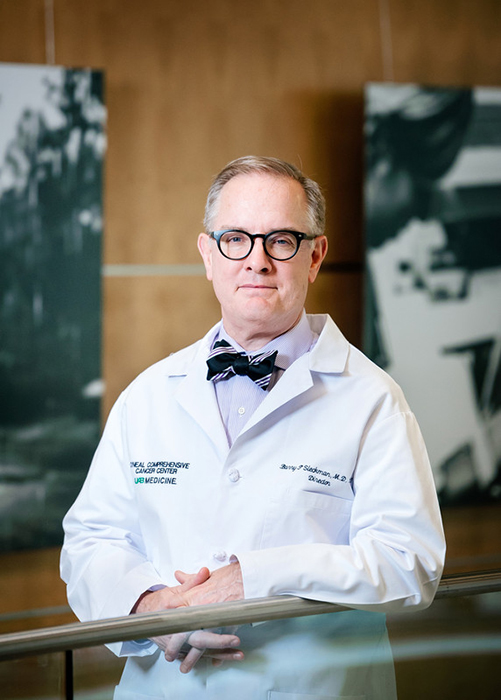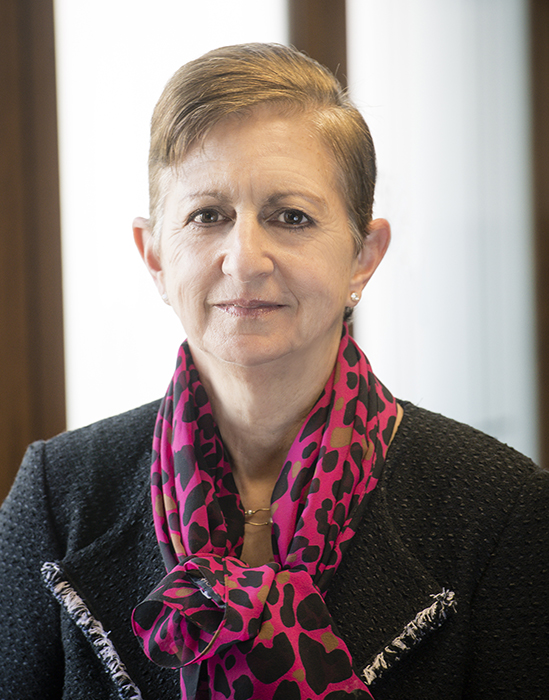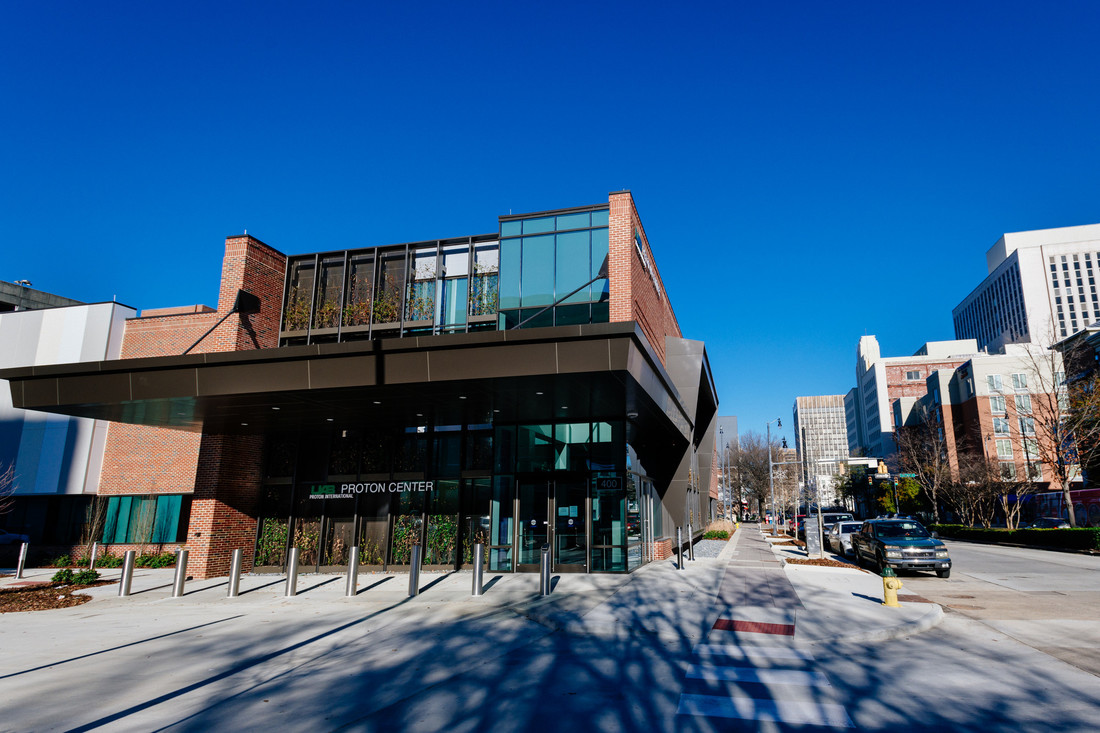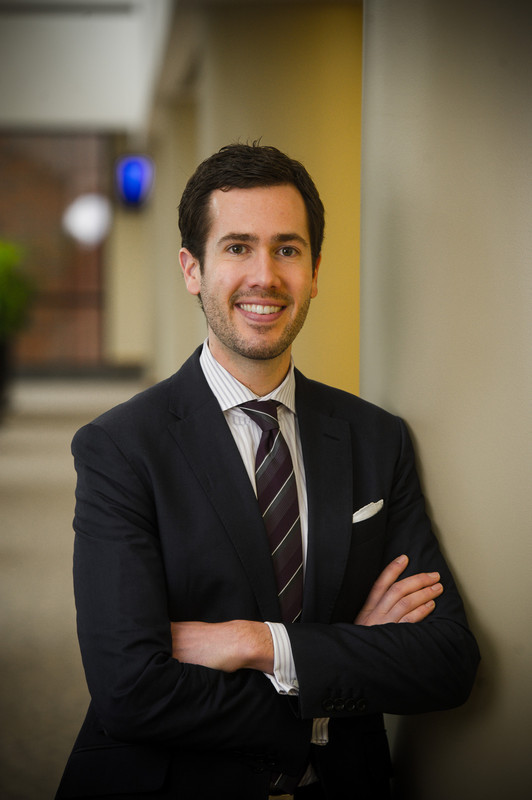 “There are some places where people do things a certain way simply because they’ve always done them that way. But here at UAB, when you pose to people a different way to do things that may enable them to achieve greater success, they are very open to new ideas.”
“There are some places where people do things a certain way simply because they’ve always done them that way. But here at UAB, when you pose to people a different way to do things that may enable them to achieve greater success, they are very open to new ideas.”
When Barry Sleckman, M.D., Ph.D., accepted the role as director of the O’Neal Comprehensive Cancer Center at the University of Alabama at Birmingham, he was primarily drawn to the research opportunities and growth potential he saw for the facility. But after officially taking over on January 6, Sleckman says he quickly discovered the biggest benefit of being at UAB.
 Barry Sleckman officially assumed the role of director of the O’Neal Comprehensive Cancer Center at UAB in January 2020. “The most positive thing about being at UAB is the people,” Sleckman says. “The people in general are all motivated to do great things and meet challenges in a very selfless way. That’s energizing.”
Barry Sleckman officially assumed the role of director of the O’Neal Comprehensive Cancer Center at UAB in January 2020. “The most positive thing about being at UAB is the people,” Sleckman says. “The people in general are all motivated to do great things and meet challenges in a very selfless way. That’s energizing.”
Sleckman completed his M.D. and Ph.D. in immunology at Harvard Medical School, his residency in internal medicine and fellowship in infectious diseases at Brigham and Women’s Hospital in Boston, and his postdoctoral training in molecular immunology at Boston Children’s Hospital. Before coming to UAB, he held positions as professor of pathology and laboratory medicine, and professor of microbiology and immunology at Weill Cornell Medicine in New York City.
Sleckman compares working at UAB to the time he spent at the Washington University School of Medicine in St. Louis, where he started his own laboratory as an assistant professor in the Department of Pathology and Immunology and spent 10 years as associate director of the Siteman Cancer Center.
“The current potential of the cancer mission at this institution is very similar to what it was in St. Louis, and they have met a lot of that potential,” Sleckman says. “A lot of our goals for the next 10 years are obtainable, because I’ve been at another institution that has achieved these same things.”
Sleckman’s goals for UAB are lofty. Namely, he wants the O’Neal Comprehensive Cancer Center to become the premier cancer care facility in the state of Alabama and one of the best in the Southeast. In doing so, he would like to double the number of new patients seen at the center.
“My overall, 10-year goal is for O’Neal to be the brand name for the very best cancer care in the state of Alabama,” Sleckman says. “Given the population of the Birmingham metro region and the instances of cancer, I’d like for us to be seeing somewhere in the neighborhood of 10,000 new patients each year. That’s an important goal, because we want people in this region to realize that if they get cancer, this is where they should come.”
UAB has already taken major strides toward achieving that goal. Here are a few of the most notable developments.
Creating a Cancer Service Line
Receiving information about cancer treatment has long been a cumbersome, multi-step procedure. On Monday a patient sees the surgeon. On Wednesday it’s a visit with the oncologist. Then on Friday an appointment with the radiation oncologist.
 Warner Huh is senior medical officer for the cancer service line.“In addition to the inconvenience, even though each one of them would basically be telling you the same thing, on Saturday you might be sitting at home very confused about the messages you got from three different doctors,” Sleckman says.
Warner Huh is senior medical officer for the cancer service line.“In addition to the inconvenience, even though each one of them would basically be telling you the same thing, on Saturday you might be sitting at home very confused about the messages you got from three different doctors,” Sleckman says.
UAB has started streamlining that process with the introduction of the cancer service line, which is designed to improve the access and coordination of clinical cancer care. This begins with the creation of a single phone number for patients, providers, and referring physicians to call, where they can speak with a live person instead of an automated system, whose responsibility is to route them to the correct specialists.
“The cancer service line is the glue that holds together cancer care across the entire system,” says Jordan DeMoss, vice president of Clinical Operations for UAB Medicine. “Every cancer patient needs to have the same approach to accessing our system, regardless of what type of cancer they have. It’s care without walls.”
This enables the focus to be specifically on the cancer treatment itself, and not on the various departments and divisions that provide clinical care. Through the cancer service line, obtaining medical records, setting up appointments and testing, and communicating information to the patient is done in a more convenient and timely manner.
“Our previous infrastructure didn’t really allow us to build out this kind of care in a supported, well-governed way,” says Warner Huh, M.D., senior medical officer for the cancer service line. “There was no clear path to make sure we could do this in an expeditious manner. That’s what triggered this. Our research endeavors here are highly dependent on the clinical enterprise. So it made sense to integrate the two under the umbrella of the O’Neal Comprehensive Cancer Center.”
In addition to making the entire process easier and less stressful for patients, Huh says it also is extremely beneficial for physicians. “It’s providing the infrastructure for that full breadth of interdisciplinary care, so the physicians don’t have to do the legwork to make sure our patients get coordinated across the continuum,” Huh says. “We want to have the systems in place to support this, so the providers can focus on taking care of the patients and not on coordinating care with other professionals
Recruiting Top Talent
One way to enhance cancer care at UAB is by increasing the number of faculty working in the many areas of cancer biology. The School of Medicine did just that with a widespread recruitment effort that resulted in the addition of 12 new faculty members in a single year.
 Senior Vice Dean for Basic Sciences Tika Benveniste led a successful cancer faculty recruitment effort. “Rather than doing recruitment in the traditional manner, where each department runs its own search for one or two people, we felt it was important to have a strategic recruitment initiative that would involve the O’Neal Cancer Center, the School of Medicine, and many of our clinical and basic science departments,” says Tika Benveniste, Ph.D., senior vice dean for Basic Sciences at the School of Medicine.
Senior Vice Dean for Basic Sciences Tika Benveniste led a successful cancer faculty recruitment effort. “Rather than doing recruitment in the traditional manner, where each department runs its own search for one or two people, we felt it was important to have a strategic recruitment initiative that would involve the O’Neal Cancer Center, the School of Medicine, and many of our clinical and basic science departments,” says Tika Benveniste, Ph.D., senior vice dean for Basic Sciences at the School of Medicine.
After receiving feedback from all 27 School of Medicine departments, the School of Medicine and the O’Neal Comprehensive Cancer Center worked with an ad agency to produce a national ad about the school’s recruitment effort across several disciplines.
“The ad itself was sort of an eye-opener,” Benveniste says. “When candidates came to visit, they met faculty from several different departments and got an appreciation for the breadth of research here and the possible collaborations. To be able to showcase many different departments and not just one really was appealing to the candidates. They could appreciate that we are very committed to growing our cancer research portfolio.
“Our rate of success was much higher than we usually see with traditional departmental searches. And those faculty brought with them significant NIH funding and even more importantly, 16 new grants from the National Cancer Institute. That’s a really important criteria for the competitive renewal of our core Cancer Center grant.”
Narendra Wajapeyee, Ph.D., was one of the faculty attracted to the opportunities at UAB. He made the move in 2019 from Yale University, where he was studying gene regulation mechanisms and signal transduction in cancer initiation, and working to translate those basic research findings into new therapies or diagnostic tools.
“I see a good, long-term plan to expand the Cancer Center program here,” Wajapeyee says. “The commitment from the UAB School of Medicine leadership along with the new faculty that have come in is going to really enhance the program, both from the basic science perspective and the translational research prospective.
“All that combined gives UAB an edge over many other places to be a premier cancer center with a strong research program. Everybody is very committed to make the O’Neal Cancer Center successful and take it to the next stage.”
Romi Gupta, Ph.D., another faculty recruit from Yale, agrees. “UAB is one of the premier institutions that is thinking ahead,” says Gupta, whose work focuses on identifying new molecules and signaling pathways that regulate cancer growth and progression. “UAB is passionate about bringing new ideas. They give us the resources to self-improve and turn challenges into opportunities. And they have a very supportive scientific environment.
“UAB is making a significant effort to provide resources for more discoveries and innovations in health care, education, and research, and state-of-art facilities for researchers. With this new support in funding and personnel, they can enroll more cancer patients for clinical trials. This will also advance the collaborations of UAB researchers with other partner institutions and biotech companies, to provide better treatment and prevention of cancer. UAB is doing outstanding work in this area.”

Leading-Edge Therapies
A highly sophisticated radiation technology for treating cancer arrived in Alabama earlier this year with the opening of Proton International at UAB. The facility, which treated its first patient on March 11, is one of only 36 proton therapy centers in the United States and the first in Alabama.
Proton therapy uses an aimed beam of protons directed at the tumor site. The beam is configured to deliver the majority of its energy precisely at the tumor location. Healthy tissue in front of the tumor receives a minimal amount of energy, and tissue behind the tumor receives very little. This reduces the damage to healthy tissue that is common in the use of conventional X-ray radiation and is the cause of most side effects.
Proton therapy is used to treat tumors of the brain and central nervous system, spine, head and neck, lung, prostate, liver, gastrointestinal tract and colon, and some breast tumors.
“This is an exciting moment in the history of cancer care at UAB,” says James Bonner, M.D., professor and chair of the UAB Department of Radiation Oncology. “This new treatment platform allows us to treat patients with the latest technology.”
UAB Medicine Infusion Therapy moved into a new home in The Kirklin Clinic in November, bringing personalized, team-based, state-of-the-art care to UAB’s infusion patients and their families. UAB’s Infusion Therapy is the largest and only magnet-designated infusion therapy center in the state of Alabama, expanding access to expert care with modern and patient-centered amenities.
Patients with such diseases and conditions as cancer, sickle cell disease, immune deficiencies, and auto immune diseases are commonly treated through infusion therapy, in which medication is directly inserted into a vein. UAB’s Infusion Therapy offers chemotherapy, blood products, antibiotics, immunotherapies, injections, and central line care.
Cancer Ambulatory Center
 Jordan DeMoss is vice president of Clinical Operations for UAB Medicine.Looking ahead, the biggest goal on the horizon is the proposed creation of a Cancer Ambulatory Center on UAB’s campus. The center will provide a single facility designed for multidisciplinary care, where much of UAB’s cancer care will take place.
Jordan DeMoss is vice president of Clinical Operations for UAB Medicine.Looking ahead, the biggest goal on the horizon is the proposed creation of a Cancer Ambulatory Center on UAB’s campus. The center will provide a single facility designed for multidisciplinary care, where much of UAB’s cancer care will take place.
“We currently have patients who have to navigate multiple buildings across multiple city blocks to receive care,” DeMoss says. “We want this new facility to become the front door for cancer care at UAB.
“Right now, we don’t have an identified physical structure that creates a space for the multidisciplinary team and the patient to come together in one setting of care. For efficiency and ease, we want to decrease the burden of getting care at UAB by providing a physical infrastructure that makes it easy.”
The planning and conceptual design of the facility already is taking place, and a fundraising campaign is in the works. “A big portion of UAB’s growth has been because of the generosity of our community, and we believe this is another pride point that our community can get behind and take ownership of,” says Tom Brannan, UAB’s vice president of Advancement. “Philanthropy will be an important component of creating this facility, where people can recognize loved ones who have benefitted from cancer care at UAB and make gifts in recognition of those individuals.
“We want this to be a world-class facility where patients throughout Alabama and the Southeast can go for world-class care. This will be the next phase of our cancer care growth at UAB.”
By Cary Estes